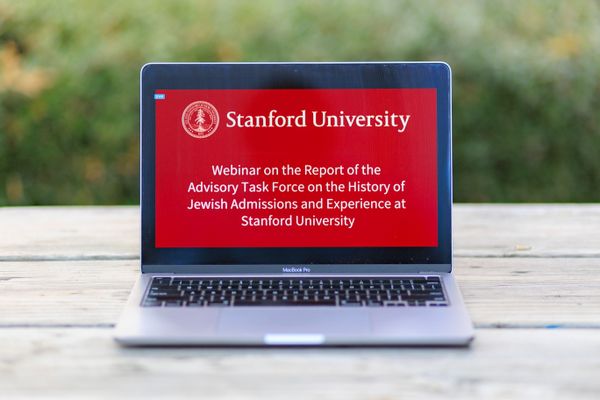History of Jewish Admissions and Experience Task Force Chair Ari Y. Kelman called on the University to start “an unprecedented conversation on our campus” in a webinar on Thursday, after a report released earlier this week acknowledged intentional limitations on Jewish student admissions during former admissions director Rixford Snyder’s 1950-1970 tenure. Religious & Spiritual Life Dean Tiffany Steinwert moderated the conversation.
Kelman said the team was “not a task force or panel to investigate current admissions processes or make recommendations in that regard” but rather “enhance student life based on the findings.”
Their recommendations were based on an investigation over two academic quarters, conducted by thirteen faculty, research assistants, students and alumni, to identify instances of anti-Jewish bias in Stanford’s history of admissions and develop proposals for a more equitable and inclusive campus.
Recommendations included public acknowledgment of the University’s historical discrimination against Jewish students, developing modules addressing Jewish identity and rescheduling the opening of the school year so that it does not coincide with Yom Kippur or Rosh Hashanah, the Jewish High Holidays.
“I hope it is done in a timely fashion,” Kelman said. “We hope that the University is able to do this across the University and not think of it as an exceptional move or accommodation.”
Kelman called for more awareness of Jewish issues on campus. Stanford’s history of antisemitism “flourished in the silence, the denials, and the inability or unwillingness of the administration to talk honestly about it,” he said.
In their investigation, the task force found a Feb. 4, 1953 memo to former Stanford president Wallace Sterling from his assistant, which revealed the University’s intention to limit the number of Jewish students admitted. The memo is the “most explicit statement on the desire on the part of anyone in the University to exclude Jewish applicants,” Kelman said.
Glover’s memo described Snyder’s concerns about admitting a large percentage of “Jewish boys,” specifically identifying two Los Angeles high schools with predominantly Jewish populations: Beverly Hills High School and Fairfax High School.
“If we look at recruitment itineraries that follow after the writing of the memo, Beverly Hills High and Fairfax High disappear,” Kelman said.
Stanford enrollment from the two high schools declined after 1953. Between 1949 and 1952, 67 students from Beverly Hills and 20 students from Fairfax enrolled at Stanford. Between 1952 and 1955, only thirteen students from Beverly Hills and one student from Fairfax enrolled at the University.
Kelman said several prospective Jewish students became discouraged from applying due to suspicions of quotas.
Snyder and other Stanford officials denied the existence of quotas relating to racial or religious identity when previously questioned by news outlets including the Stanford Daily and LA Times.
Continuous denials from the University were “not an example of one bad actor acting independently, but it was individuals empowered by a commitment to admissions that supported this kind of action,” Kelman said.
Kelman said the task force was unable to find how long the discriminatory practices were in effect and to what extent they were implemented in admissions. However, he said, “whether or not [the practices] were in place for a year, or two, or five is immaterial when the effect of even one year or two years rippled for decades.” The task force could not determine whether Snyder’s antisemitic approaches affected other high schools.
Kelman also said the task force did not find evidence of clear intent to restrict admissions from applicants with other backgrounds or identities.
